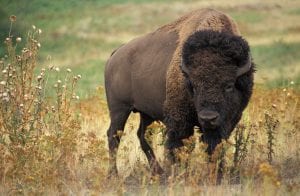New paper on fire, bison hunting, and climate
 Native bison hunters on the northwestern Great Plains used fire to manipulate bison grazing patterns and increase the success rates of communal hunts. In so doing, they leveraged climate opportunities to burn, ultimately amplifying the effects of climate on prairie fire activity.
Native bison hunters on the northwestern Great Plains used fire to manipulate bison grazing patterns and increase the success rates of communal hunts. In so doing, they leveraged climate opportunities to burn, ultimately amplifying the effects of climate on prairie fire activity.
Using geoarchaeology and landscape archaeology, my colleagues and I document this sophisticated fire use between 1100 and 1650 CE associated with the use of stone demarcated drive lanes and jumps to harvest bison en masse. Bison prefer to graze recently burned patches. When climate conditions were right, indigenous hunters burned prairie near the mouth of these drive lanes to lure bison herds in. Once within the gathering basin of a drive line complex, the hunters could initiate a stampede and funnel the bison towards the jump. By using climate conditions in their decision making, Native hunters were amplifying the impact of climate variability on prairie fire activity.
Our work was recently published in the Proceedings of the National Academy of Sciences. You can find a link to the work here and on my Publications page.
Roos, Christopher I., María Nieves Zedeño, Kacy L. Hollenback, and Mary M. H. Erlick (2018) Indigenous Impacts on North American Great Plains Fire Regimes of the Last Millennium. Proceedings of the National Academy of Sciences 115:8143-8148.
Comments are Disabled